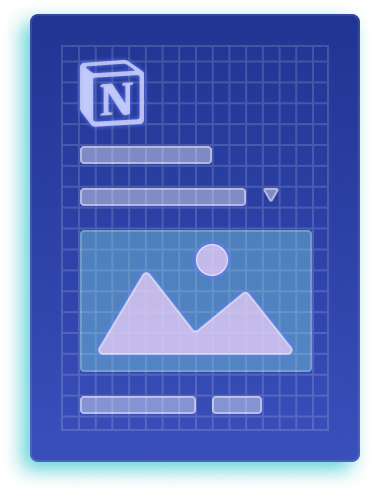
5 Top Contentful Alternatives for 2025
Contentful is a robust and highly flexible cloud-based CMS with a high-quality API and various workflow management tools. However, it still falls short on several levels and has limitations that can frustrate marketers.
If you’re one of them or simply looking for strong Contentful alternatives, you’re in the right place. In this piece, we’ll tell you about the top five CMS platforms that can effectively replace Contentful and how to choose one that’s right for your business.
{{cta}}
The Common Issues With Contentful
If you’re wondering what the exact issues with Contentful are, or you want to know what others have found problematic, here’s an overview:
- Complexity for non-developers — Contentful is very user-friendly, but it can still be a bit too technical for non-developers. For instance, you might need to set up content types using the API side of the CMS.
- Limited design flexibility — Contentful is a headless CMS focusing on delivery instead of presentation. Content editors are restricted by developer-made templates and components.
- Steep learning curve — Contentful focuses on APIs, which can make it complex, especially if you’re used to traditional CMSs.
- Dependence on developers for customization — If you want to customize your platform, you’ll need to rely on front-end developers who can handle that.
- Challenges with scaling content operations — Scaling can be challenging with Contentful because it will likely require careful planning and custom integrations.
- Restricted plugin and integration options—Contentful has an extensive library of plugins and integrations, but this may still not be enough for users used to larger ecosystems like WordPress.
- Performance issues with larger websites — Contentful is known for having performance issues on larger sites as it requires highly optimized front-end code.
The Top Alternatives to Contentful, Reviewed
After carefully reviewing the many Contentful alternatives on the market, we eventually settled on five that we believe are the very best. Check each one's reviews to see what they do better than Contentful.
1. Webflow — Best Combination of CMS With Powerful Design Capability
Webflow is a website experience platform made to assist designers, developers, and marketers in creating responsive websites with unique visuals without coding.
However, it also comes with a wholly integrated CMS tool that’s a great alternative to Contentful, mainly because you can design and structure your content simultaneously. Here’s a quick overview of the features it has:
- Dynamic content — Webflow CMS lets you store and manage dynamic content in the form of Collections, each with its own items that act as individual pieces of content.
- SEO optimization — You get a lot of pre-built SEO tools in Webflow, which makes it very easy to optimize content within the same platform.
- Custom content structures — You can create custom content structures and fields in Webflow, which is helpful for tailored and flexible content management.
- Edit mode — Webflow has a robust edit mode that doesn’t risk altering the site design and makes it easy to change the content.
- Reliable hosting — You don’t need to worry about hosting with Webflow because it provides reliable hosting while making it scale easily.
- Content relationships — You can create relationships between various types of content in Webflow, which lets you have interconnected and complex content on your site.
If you want to migrate from Contentful to Webflow, we have a guide to make it easier.
2. WordPress — Most Popular CMS in the World
WordPress is a vastly popular open-source CMS that’s effectively become the default platform for creating and managing websites. It’s relatively easy to use and is noted for having many more plugins than Contentful, while its comparison to Webflow is a whole different matter. As for its features, here’s what you should know:
- Massive plugin and theme library — One of the main defining features of WordPress is its vast ecosystem of themes and plugins. It’s also essential as you get to tinker with any function on the site and with your content.
- Media management — WordPress has a built-in media library, which makes it easier to upload, manage, and organize media files like images and videos.
- User-friendly interface — You get a fairly intuitive dashboard in WordPress, making content creation, management, and editing simple.
- SEO functions — WordPress is very SEO-friendly and designed according to SEO trends. It also offers a vast array of plugins covering all your SEO needs.
3. Drupal — A Robust Hybrid CMS for Those Exploring More Technical Options
Drupal is another open-source CMS known for being highly scalable and flexible, making it suited for complex websites, which can’t always be said for Contentful. Here’s what it offers in terms of features:
- Taxonomy system — The advanced system makes organizing and categorizing content easy, no matter its complexity.
- Excellent performance — Drupal can handle large volumes of content and high traffic, which is important for complex sites.
- Advanced API aspects — With strong API support, you can integrate Drupal with various other systems, which is helpful in the creation of headless CMS apps.
- Strong workflows and user permissions — Drupal boasts robust workflow capabilities and a granular permission system that’s much better than Contentful's.
4. Strapi — An Open-Source Headless CMS, True Contentful Competitor
Strapi is an open-source, headless CMS based on Node.js. It focuses on the backend of your content, which you can deliver to almost any front end, such as a mobile app, website, or something else. It does this through API.
Due to this, it’s one of Contentful’s main competitors, making it one of the few genuine Contentful alternatives. Here’s a list of its top features:
- API-first aspect — Strapi can automatically create GraphQL or RESTful APIs, making your content accessible across various apps.
- Customization — Strapi has a lot of customization options thanks to its open-source nature.
- Content-type builder — You can use a user-friendly graphical interface to create code-free data structures.
- Wide range of databases — Strapi supports a lot of popular databases, like MySQL, PostgreSQL, MongoDB, and SQLite, making the CMS more flexible.
5. HubSpot — The All-in-One CMS With Marketing and CRM Integration
HubSpot is a highly successful and popular marketing hub that handles your inbound marketing, customer service, and sales needs. It offers a wide range of features that are designed to help you attract new customers and keep them engaged. It’s more of a traditional CMS, so it’s an all-in-one platform, but it still compares well to Contentful. Here’s what it offers:
- Smart content — HubSpot lets you deliver personalized content based on the characteristics of your visitors, like their location and device.
- CRM integration — The HubSpot CMS platform is integrated with a robust CMS tool, making managing data for your content and customer interactions easy.
- Drag-and-drop visual editor — This highly user-friendly editor allows you to easily create and alter pages on your site without writing code.
- Templates and themes — HubSpot boasts a robust selection of themes and templates that will make content creation faster.
How to Choose the Best Contentful Alternative
So, now that you’ve seen five excellent Contentful alternatives, how do you choose one? Unlike Pokemon, you can’t have them all, so you’ll need to choose one that mostly suits your current needs for content management. With that in mind, here are six steps to help you settle on one of these CMS systems.
1. Assess Your Team’s Technical Expertise
Each of these alternatives requires a different level of expertise. Assess what your team can do and choose one CMS based on that.
The good news is that these alternatives include both no-code tools that are user-friendly and thus require little technical know-how, but you also have a developer-focused platform.
Of the five available, Webflow is the best no-code option, while Drupal is the top choice for technical teams.
2. Prioritize Your Budget and Pricing Needs
Besides the expertise, your budget and pricing needs play a vital role in which CMS you can choose. The Contentful alternatives we recommend come with different pricing plans, often including subscription costs and additional costs like those for specific plugins you choose.
Many of these have free versions or free trials, but these are more for testing the platforms. You’ll still have to pay for the full capabilities, especially when you add plugins and themes.
If you have a more constrained budget, your best options are WordPress, which is very affordable if you’re primarily using free plugins, and Strapi, which is both free and open-source. It’s worth noting that WordPress can become quite expensive once your site grows significantly and you have to buy several plugins.
3. Evaluate Design and Customization Capabilities
The next step is to examine each platform's design and customization capabilities. It depends on what you need, but you’ll likely want some or a high level of design options and a lot of freedom in customization.
For instance, Webflow is the best option if you want design freedom. It’s also a no-code platform that offers many pre-built templates that can be customized extensively. Due to Webflow’s focus on details and complete design control, everything about it is very customizable.
Another great option in this regard is HubSpot CMS, as it’s very flexible with design, requires only basic coding knowledge, and has lots of templates, which you can customize with a visual editor.
4. Consider Scalability and Growth Potential
If you plan on growing your website and the amount of content on it, you need to look for platforms that can scale well.
You want them to handle constantly growing content libraries, high amounts of traffic, and increasingly complex workflows. The CMS needs to handle all this without suffering performance issues.
The best options here are Webflow, which is suited for enterprise-level scaling, and Drupal, which can scale seamlessly with large projects.
5. Look for Seamless Integration Options
Another important factor in your decision should be integration options. You want to have as many as possible and have them handled seamlessly. This covers third-party tools, existing marketing workflows, APIs, analytics, and CMR.
HubSpot is likely the best choice if you want the most integrations, thanks to its numerous built-in marketing tools and CRM integrations. WordPress is also at the top of the list thanks to its extensive selection of plugins and APIs, and so is Webflow, which lets you connect to a lot of platforms through API.
6. Focus on SEO and Performance Features
You’ll likely need SEO and performance features that will get your content pieces to rank highly in the search engines, which is why you need to evaluate the platform’s capabilities for SEO optimization.
You need to be able to improve your page load speed and mobile responsiveness, among many other things.
This comes at the helm of either built-in SEO tools, like in the case of Webflow, or through a range of plugins you can add to the platform, like in the case of WordPress.
{{cta}}
Bottom Line
You must carefully consider what each option offers and what you need from your CMS. Here’s a quick overview of the top five Contentful alternatives:
- Webflow — A visually driven website experience and CMS platform ideal for design-centric teams.
- WordPress — Offers an extensive theme and plugin ecosystem, giving you a very adaptable CMS.
- Drupal — Suited for complex projects and offers strong API and content modeling capabilities.
- Strapi — An API-first, self-hosted, and open-source CMS that gives full control to developers.
- HubSpot — All-in-one marketing hub that integrates your CMS needs with CRM, marketing, and sales tools.
If you’ve settled on our top recommendation and need assistance migrating to Webflow, feel free to contact Flow Ninja.





The 2025 Marketer’s Guide to CMS
Check out our comprehensive whitepaper covering the best CMS options for marketers who aim to scale their content operations.
.png)

.png)

in mind?
Talk with our team and learn how your ideas can become digital experiences.

.svg)





.webp)

-min.png)
.png)
.png)



-min.png)









.svg)

.png)
.png)
.webp)
.svg)


